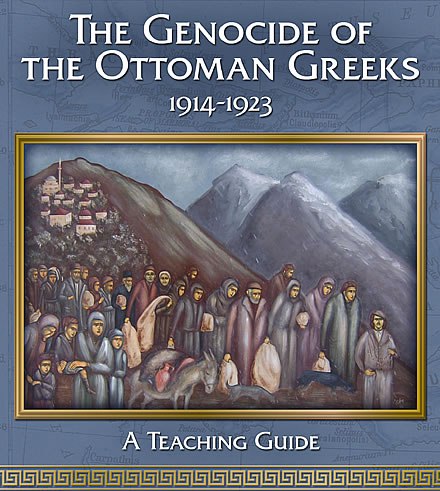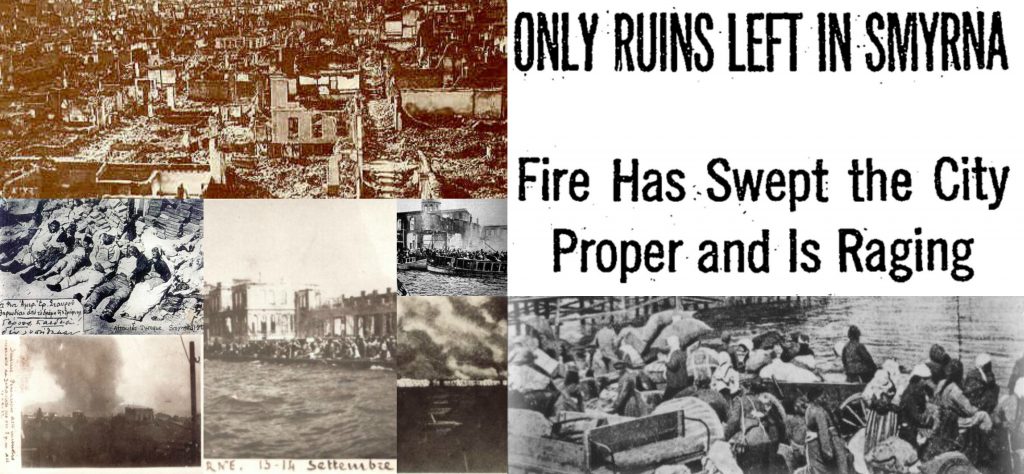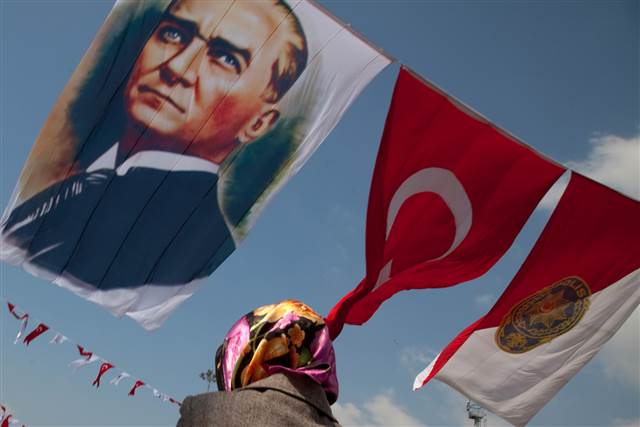
Views: 2698
Message in the Bottle, One Hundred Years Later
Smyrna, Ottoman Empire, September 1922
Dear World –
Our time has come to disperse like wildflower seeds in the wind. We are the last storytellers and children of the Ancients, their legacy and their accomplishments.
The men and women have been separated. Many men were sent to the interior. Women clutching their babies, even in death, have walked miles. The elders have fallen by the roadside. The children, oh, the sweet children, their eyes are glazed with fear, their words lost, and, yet, they see a butterfly and for one moment, they smile. If only … well, the time has come to share our secret.
Our secret is one of western civilization, we protected the legacy of the Ancients. It is their spirit, their legacy that demonstrates human accomplishments defy the ages and that in a democracy, people thrive and achieve.
The legends of the Ancient Greeks of Asia Minor and Pontos which we protected so honestly and devoutly include legends in mythology – the Amazon women fighter and the story of Jason and the Golden Fleece; and legends in expanding the knowledge of humankind – the first philosopher, Thales; the first scientist Anaximander who showed us the sun and the system of stars and planets and who was even the first to create a map of the world; Anaximenes who explained air; the world traveler, Hecateus; Hippodamos, who showed us how to build villages with wide straight streets with a city center and even how to reward inventors for their ideas; the architect Isidoros who helped build the Hagia Sophia in Constantinople and who identified the the T-square and the string parable; and, wise Heraclitus, who right now is so important, Heraclitus shared the understanding that change is constant.
Change is constant. Our culture has been destroyed. I don’t know where we will go – if we survive. I hope some of us will, and, like a seed taken by the wind, I hope our culture will be reborn, revitalized and blossom once more.
We are at the quay in Smyrna. The waters boil as though Poseidon is angry. Yet, he is prepared to carry as many of us as possible to safety. The fires are burning. The wind is hungry. One lashes at the other, feeding on the fear and destruction, until there is only one, with only one outcome, death.
The fires are closer now. The smell of burning flesh is overwhelming. Our humanity is disappearing before my eyes. I write faster so that perhaps our story will reach another shore, another day to tell the world who we are, our legacy.
I close now. My time is near to either die or survive. I wrap this story in a bottle and hope you understand that it is not one individual who does evil, it is many. To ward off this evil, one must make noise and take action to protect the higher knowledge and achievements of every culture and society.
I feel the fire now. The soldiers are shooting those who attempt to seek shelter in the water, to calm their burns or even those seeking to break free of the quay for surely there is cool air not far away.
We will survive. This I do know. We will live another day to share our story, our culture, our ancestors – the Ancients.
An Ottoman Greek*
The Greek Genocide
The International Association of Genocide Scholars (IAGS) officially recognized the Ottoman Greek Genocide as genocide in 2007, almost one hundred years later.
According to The Asia Minor and Pontos Hellenic Research Center (AMPHRC), between the years of 1914 to 1923, over 2.5 million people of lost their lives in the first genocide of the 20th century – the Armenians, Assyrians and Greeks.
“By 1923, out of approximately 2 million Greeks living in Asia Minor at the beginning of World War I, more than 700,000 perished, and over 1.1 million were uprooted prior and during the forced population exchange between Greece and Turkey.”
George Mavropoulos, founder of The Asia Minor and Pontos Hellenic Research Center,Inc. (AMPHRC) (www.hellenicresearchcenter.org) has convened scholars of Jewish, Armenian and Greek history to research and present their scholarly work on a regular basis on the Greek genocide.
Included in the public dialogue are Ronald Levitsky, an award winning teacher and the recipient of the 2006 Aharonian Award from the Genocide Education Project; Dr. Constantine Hatzidimitriou, Queens Director of School Improvement for New York City’s Department of Education and an Associate Professor at St. John’s University; and Dan Georgakas, Director of Greek Studies Project, Center for Byzantine and Modern Greek Studies, Queens College, City University of New York. A significant contributor who has since passed is the late Dr. Harry J. Psomiades, Professor Emeritus of Political Science at Queens College and the Graduate School of the City Univeristy of New York.
Who were the Greeks of Asia Minor and Pontos?What is the legal definition of genocide?What is a “white death”?How did the Greek culture survive the centuries?How did the Greeks become victims of genocide?Who perpetrated such violence?Who are the elders shining a light on man’s inhumanity to man?How could such a tragedy be forgotten?
Included in the AMPHRC teaching guide The Genocide of the Ottoman Greeks 1914-1923 is a poem, by an unknown author, who wrote of Smyrna, one of the most cosmopolitan multicultural dynamic cities in the Ottoman Empire before and after its destruction.
“The Martyred City”
Glory and Queen of the Island Sea
Was Smyrna, the beautiful city,
and fairest pearl of the Orient she –
O Smyrna, the beautiful city!
Heiress of countless storied ages,
Mother of poets, saints and sages,
Was Smyrna, the beautiful city!
Silent and dead are church bell ringers
Of Smyrna, the Christian City,
The music silent and dead the singers
Of Smyrna, the happy city;
And her maidens, pearls of the Island seas
Are gone from the marble palaces
Of Smyrna, enchanting city!
She is dead and rots by the Orient’s gate,
Does Smyrna, the murdered city,
Her artisans gone, her streets desolate –
O Smyrna, the murdered city!
Her children made orphans, widows her wives
While under her stones the foul rate thrives –
O Smyrna, the murdered city!
(From The Blight of Asia, by George Horton, Consul-General of the United States, 1926)
The teaching guide then instructs the students to write their own poem after reading the historical material. The power of storytelling illuminates human accomplishments and human suffering while demonstrating through the creative process how to live, despite the horrors.
Coinciding at the same time, there is a newly released exceptionally well done documentary film of the disappearance of the people and cosmopolitan culture of Smyrna by filmmaker Maria Iliou, Smyrna: The Desruction of a Cosmopolitan City 1900 – 1922 that is now available on DVD.
“They danced the ancient ways in the circles, under the Turkish occupation. They danced in small circles, protecting each other. Everybody is together, close and together. They do the same thing. It goes back to the birth of Zeus.”
 Marvropoulos explained the story of the birth of Zeus. Kronus, the father of Zeus, knew that his wife Rhea was to give birth and knew that the child would one day take over the leadership. Kronus wanted to kill Zeus. So Rhea went to Crete to escape. The Ancients knew they needed to hide the cries of childbirth to protect the baby from the omniscient Kronus. So they danced a war like dance and made so much noise with their spears, arrows and shields that Kronus couldn’t hear the cries during the birth of Zeus.
Marvropoulos explained the story of the birth of Zeus. Kronus, the father of Zeus, knew that his wife Rhea was to give birth and knew that the child would one day take over the leadership. Kronus wanted to kill Zeus. So Rhea went to Crete to escape. The Ancients knew they needed to hide the cries of childbirth to protect the baby from the omniscient Kronus. So they danced a war like dance and made so much noise with their spears, arrows and shields that Kronus couldn’t hear the cries during the birth of Zeus.Mentioning the importance of dance, brings a new perspective to the dance of Zorba, the Greek.
The Greeks of Asia Minor and Pontos are beginning to tell their story, thanks to their resilience, drive to survive, and finally, peace of mind to be able speak of the tragedy of the Greek genocide.
For more information on AMPHRC and to order the teaching guides, please visit their web site at www.hellenicresearchcenter.org.
Note: The art work on the cover of the teaching guide The Genocide of the Ottoman Greeks 1914-1923 is done by Efi Mavridis of Kozani, Greece. The painting is an illustration of the stories her grandparents, survivors of the Pontian Greek genocide, shared with her when she was a child.
Origins of images: Facebook, Twitter, Wikimedia, Wikipedia, Flickr, Google, Imageinjection, Public Domain & Pinterest.
Read our Disclaimer/Legal Statement!
Donate to Support Us
We would like to ask you to consider a small donation to help our team keep working. We accept no advertising and rely only on you, our readers, to keep us digging the truth on history, global politics, and international relations.











